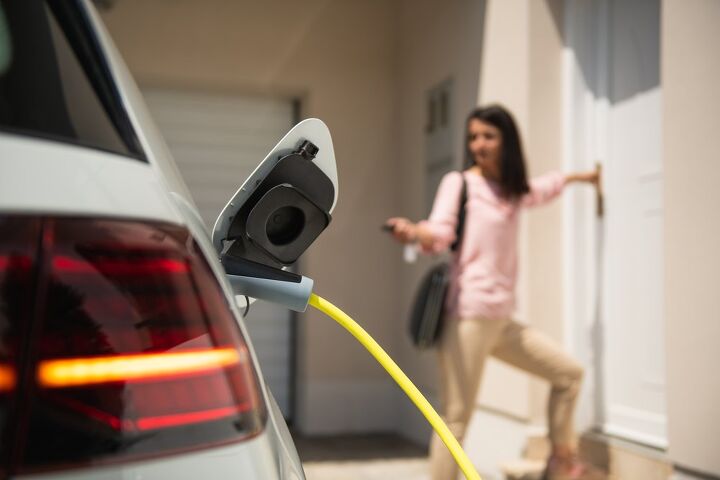Why More Americans Are Considering Electric Cars Now Than Ever Before
Recent data collected over a three-year period ending in February 2024 shows a significant increase in consumer searches for electric vehicles (EVs). Analysis indicates that interest in EVs has more than doubled, with a 177 percent rise in searches, underscoring a shift in consumer behavior and a greater inclination towards purchasing electric vehicles.
Influence of Fuel Prices on EV Demand
A distinct spike in searches for electric vehicles was noted between February and March 2022. This period coincides with increases in gasoline prices, suggesting a possible link between rising fuel costs and heightened interest in electric vehicles. Such trends highlight how external economic factors can drive consumer interest towards more sustainable vehicle options.
Popular Electric Vehicle Models and Pricing Trends
CarMax's sales data from September 2023 through February 2024 identifies the electric vehicles that are currently leading in popularity, along with their average sales prices:
- Tesla Model 3: $34,045
- Tesla Model Y: $43,896
- Nissan LEAF: $18,465
- Volkswagen ID.4: $31,576
- Ford Mustang Mach-E: $38,713
- Audi e-tron: $41,205
- Chevrolet Bolt EUV: $26,776
- Chevrolet Bolt EV: $22,564
- Tesla Model S: $45,574
- Hyundai Ioniq 5: $37,036
The pricing data reveals a range from approximately $22,000 to $45,000, which is significantly lower than the previous high of $72,000, suggesting that electric vehicles are becoming more financially accessible to a broader range of consumers.
Regional Sales Insights
While California remains a stronghold for electric vehicle sales, there is notable growth in the East Coast markets, particularly in Massachusetts, New York, and Maryland. This geographical expansion of EV sales indicates a nationwide shift towards electric mobility.
Public Sentiment and Market Response
Aligning with CarMax's findings, a 2023 Pew Research study revealed that a substantial portion of Americans are considering electric vehicles for their next purchase. This is reflective of a broader change in consumer preferences and a growing acceptance of electric vehicles across the country.
The collected data from CarMax not only emphasizes the diversity in popular electric vehicle models but also illustrates a trend towards more advantageous pricing. As the electric vehicle market continues to evolve, regional and national sales are expected to expand, supported by a favorable shift in public attitudes.
This article was co-written using AI and was then heavily edited and optimized by our editorial team.
More by TTAC Staff
Latest Car Reviews
Read moreLatest Product Reviews
Read moreRecent Comments
- 28-Cars-Later I thought today's young people weren't even getting licenses to drive, so which is it?
- 28-Cars-Later Either last year or the year before I was discussing how The Dytopia™'s BEV schemes do not scale simply because the existing grid cannot generate enough power to replace ICE and the gigantic investment necessary in the grid was not forthcoming (Zelensky needed another house in Miami Beach after all you b!gots). So it struck me the only path to sort of do it is natural gas which became abundantly cheap 15 years ago because of fracking. Fast forward to more recently and surprise surprise we're attacking civilian use of natural gas out of nowhere for very little benefit. I couldn't find any good data to break down natural gas consumption between industrial use and civilian use, but spitballing I'd say the two largest chunks would be power generation and heating followed by small slices for other industrial use and home appliances- the latter probably being 5% or less (on my own gas bill its about 3-10% for the non furnace gas use depending on laundry loads). Some argued The Dystopia wanted to take away any energy freedom the proles have outside of electricity which they control on their whims, but I'm thinking that small number is optimal for them to take back because it doesn't force any additional infrastructure cost to gain (i.e. the low hanging fruit). As more power plants are spun up I expect a slow consolidation away from civilian nat gas because ManBearPig or whatever other fairy tale, but its really to power the gilded electronic cage they are constructing out of this once great nation. Seriously, break this down:Self lubricating Diesel engine with conventional OTS components, built for more than a ten year lifespan and 1m or more miles of use which can quickly be refueled at hundreds of locations (or fuel be brought to them). Pure BEV with some large amount of rare earths with a ten (?) year lifespan and perhaps 1m miles use but which has an avg daily downtime of 2 hours (?) to refuel and must be powered by a limited number of natural gas stations at static points (theoretically you could put a diesel fuel depot anywhere must faster and refill it with trucks). Other than ManBearPig fiction, your only savings in emissions is whatever the DEF isn't catching now (which is up to 90% in civilian diesel use per JLR) minus whatever emissions sins the nat gas burning creates. Think about how ridiculous all of this is to save 10-20% of emissions of only heavy trucks (BEV ships aren't ever going to be a thing) and you still have to frack like mad to have the natural gas to do it which would create the diesel in the first place. What is the nonsense?
- Kwik_Shift_Pro4X The only vehicle from Chi-nah I'd be interested in would be a LR Defender or MB G-Wagon knock off with Chinese uniqueness.
- FreedMike I'd be willing to look at a Chinese built car if Chinese companies were building them domestically.
- SCE to AUX Hydrogen is the worst 'green' fuel there is - highly inefficient to produce, troublesome to distribute, and extremely expensive.


































Comments
Join the conversation